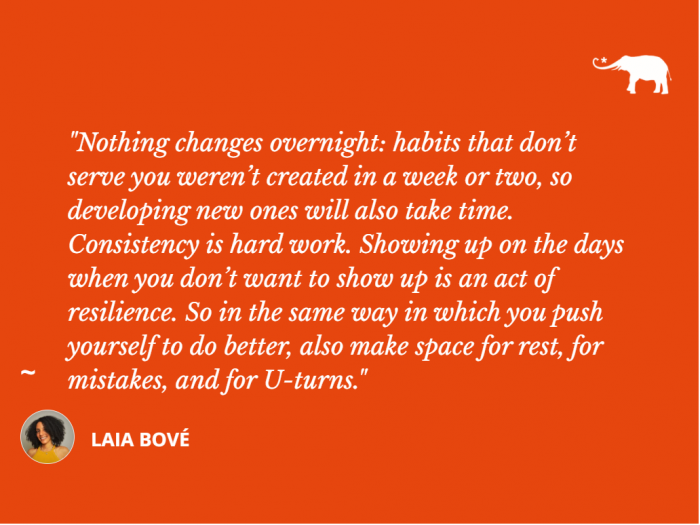View this post on Instagram
When I decided to start making more time for writing in my life, I quickly realized that just like everything else, if I wanted to be successful, I needed to figure out a process that worked for me and that was sustainable over time.
Not only did I want to start writing and publishing articles more consistently, I also embarked on the journey of writing my first fiction novel, and that required new skills that I yet had to delve into and further develop.
Not sure if out of fear of just doing it, or because I truly needed inspiration, I took some time to read a couple of books on novel writing, including the brilliant Save the Cat! Writes a Novel by Jessica Brody, which gave me great ideas and resources on how to begin to plot, structure my novel, and write something (maybe) worth publishing.
Yet I found myself reading a lot about writing, and few words were being typed out.
I was determined to not let the inspiration dim and my drive fade away now that I have found the spark for writing again. If I wanted to succeed, I needed constancy.
Even though I am utter sh*t at sticking to routines, there is one that I have maintained every day (I am sure I have skipped a few here and there!) since my first yoga teacher training in Miami several years ago.
One of the first things we learned about in YTT was the importance of creating and sustaining a personal practice—a Sadhana. Our lead teacher, Claire Santos, helped us design our own combination of yoga asana, meditation, and breathwork and we had to stick to it for at least 21 days, and then reevaluate, readjust, and start again.
Just like any other habit, I was absolutely convinced that I would fail. If I could hardly remember to take my Crohn’s medicine every morning, how the hell was I supposed to do all these things for 30 minutes daily? For 21 days?
Yet I did. And I am sticking to writing, too.
I have realised that anything that I have maintained for a long time in my life has had to have a reason beyond the initial excitement and novelty.
For me to commit to any activity joyfully and creatively, I make sure the following occur:
1. Ask why I write
Knowing why I practice yoga and meditation daily is the reason why I keep going back to my mat. When the little grumpy voice in my head tells me it’s too early to practice, and I could skip a day, or when I actually skip a day or two and then feel like sh*t physically, mentally, or emotionally, I just remember my why.
Knowing why I write is just the same. The days when I sit in front of my laptop or even better, the days when I find a new load of laundry to do, or an errand to run, or a plant to water just to avoid writing, I remind myself of why I write.
So sit down a few minutes, take a few breaths, and write down one, two, three—or twenty reasons why you write. Repeat it to yourself whenever you need to.
2. Set up the space
I am grateful to have a home with an extra room that belongs to me and me alone. If my husband ever enters, I almost hiss like a cat.
In that room, I have set up my yoga space not only to practice but to teach online classes, and I also have my desk facing the window (as per Waylon’s recommendation) to the forest on the back where I can watch deer, squirrels, and birds frolic about.
I have two screens so one is opened to my writing software and the other has the thesaurus open as well as any other research tabs. I am still in search for the perfect chair to sit on, but that’ll come—I am sure. Having a space that is set up especially and intentionally for the activity you want to perform is crucial, however, you may not have the luxury of a whole room with views to the woods, and that’s totally fine.
Consider creating a small space anywhere in your home: an under-used closet, a little nook in the living room, or maybe on your balcony if it’s nice outside. For some of us perhaps, the solution is a favourite table at the local coffee shop where we choose to go to write.
3. Set small goals
When people approach me about starting their yoga or meditation practices, there is one thing I will always mention: start small.
Of course it would be amazing to allot one hour a day to your physical practice and another 30 minutes for meditation, and if you have enough time, throw in a 20-minute savasana afterward.
But the reality is that most of us don’t have that kind of time. Even if we hope that we do, we probably won’t stick with it for long. They’ll switch your schedule at work, or your son will have a school dance, and then it all crumbles, then we quit, then we feel bad.
But what if you chose a tiny goal instead? Perhaps you allocate 20 minutes every morning to meditation, and that’s all you commit to. Maybe you write 30 minutes every evening after supper instead of hoping that you’ll find a three-hour chunk of time in two weeks when you have a day off.
Set up a small and feasible goal. See if it works and if it’s attainable for a few weeks (maybe 21 days), and then readjust.
4. Give yourself a chance to succeed
Nothing changes overnight: habits that don’t serve you weren’t created in a week or two, so developing new ones will also take time. Consistency is hard work. Showing up on the days when you don’t want to show up is an act of resilience. So in the same way in which you push yourself to do better, also make space for rest, for mistakes, and for U-turns.
When you find yourself uninspired, take a moment to meditate on your why, or reorganise your space. Transform unfulfillable expectations into small, attainable intentions, and give yourself compassion and understanding for the ups and downs.
Usually, when things get rough, I find, the inspiration and the breakthroughs will soon arrive.











Read 9 comments and reply